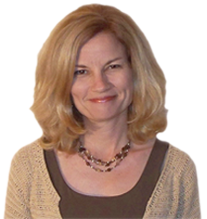Book Number 4 on my Book-a-Week list for 201 – NOW, Discover Your Strengths by Marcus Buckingham & Donald O. Clifton, Ph.D.
I’ve read many parts of this book previously, particularly the opening chapters and the chapters that describe my five core talents, but this time I read it cover to cover. Given my passion for helping others fully maximize their strengths, and the work I do related to this passion on a daily basis, this was a perfect and timely read.
The book includes access to a one-time use code that allows you to take the Gallup Strengths Finder assessment on-line. I use this assessment frequently with my clients. In fact, I’ll be completing a facilitator certification this month through Core Clarity, Inc. that is centered around maximizing the use of the Strengths Finder tool with individuals and organizations.
Upon completing the assessment on-line, you receive a list of your top 5 talents (not actually strengths because strengths are built upon our core talents through applying knowledge, skills and desire) and their definitions. That’s it. And while that list of 5 talents and their definitions can be very enlightening, there is much more to be learned about how to maximize those talents than the assessment report provides. This is why I am pursuing the Core Clarity training. I have seen first hand on numerous occasions how powerful it can be to leverage talents to their fullest.
The book’s primary message is this: the surest way to have success in life is to understand fully what your hard-wired talents are, build them into strengths, and organize your life around the maximum use of them. By the way, a “talent” is defined as a recurring pattern of thoughts, feelings or behaviors that can be productively applied. For a talent to become a strength, it must be combined with knowledge, skills and ongoing use. A strength can be further defined as consistent, near perfect performance in an activity you love doing.
Decades of research, including over two million interviews of top performers in all fields, led to the creation of the Strengths Finder tool, and what the Gallup organization calls the “strengths revolution.” Clifton and Buckingham, creators of the assessment tool, originally sought a list of “success strengths” that they could advise people to acquire, or that they could use to hire the “best” people. But their research found there is no such list. Any set of talents can lead to success, as long as they are recognized and maximized in the individual. What an amazing and liberating finding for most of us, who, prompted by the world’s misguided attempts to help us improve, have tended our whole lives to focus on improving our weaknesses rather than maximizing our strengths. Trying to fix weaknesses in most cases only leads to small improvements. While we must “manage” our weaknesses to avoid derailing our careers and our relationships, assuming we can fix them, and that fixing them will give us the most success, is misguided at best and demoralizing at worst.
Not only is it critical to understand and leverage your own talents, understanding the talents of those you work with and care about is incredibly eye-opening and helpful as well. The knowledge gained through completing the Strengths Finder assessment in a team setting can exponentially increase productivity and job satisfaction by giving people permission to make sure they are working in their strengths as often as possible. And the insights gained when couples complete the assessment can clear up years of misunderstanding and struggle.
Read the book, complete the assessment, learn about your talents and strengths, and start making sure you are building your lives upon them. If you’d like my help with any of this, let me know. I would love to help you.
Click here to order a copy of the book.



